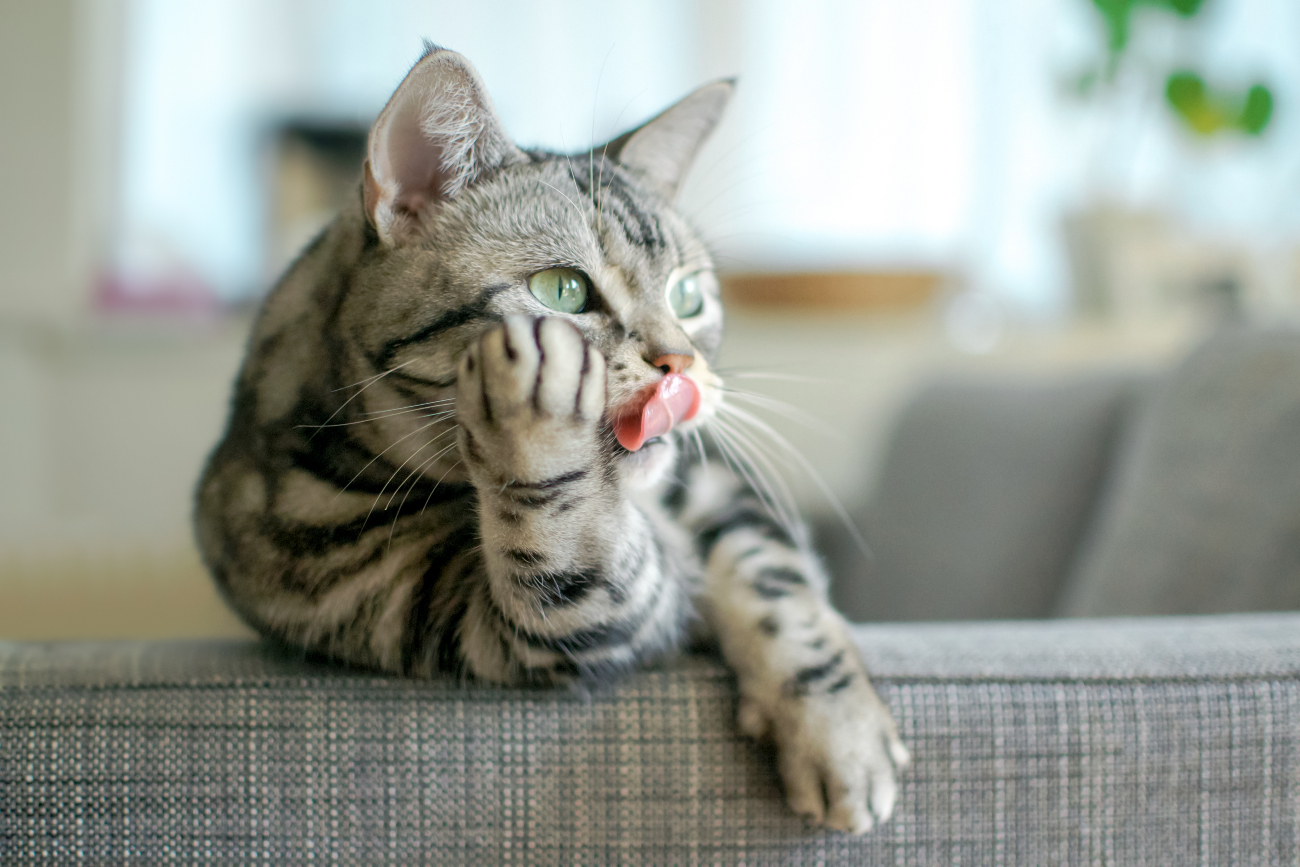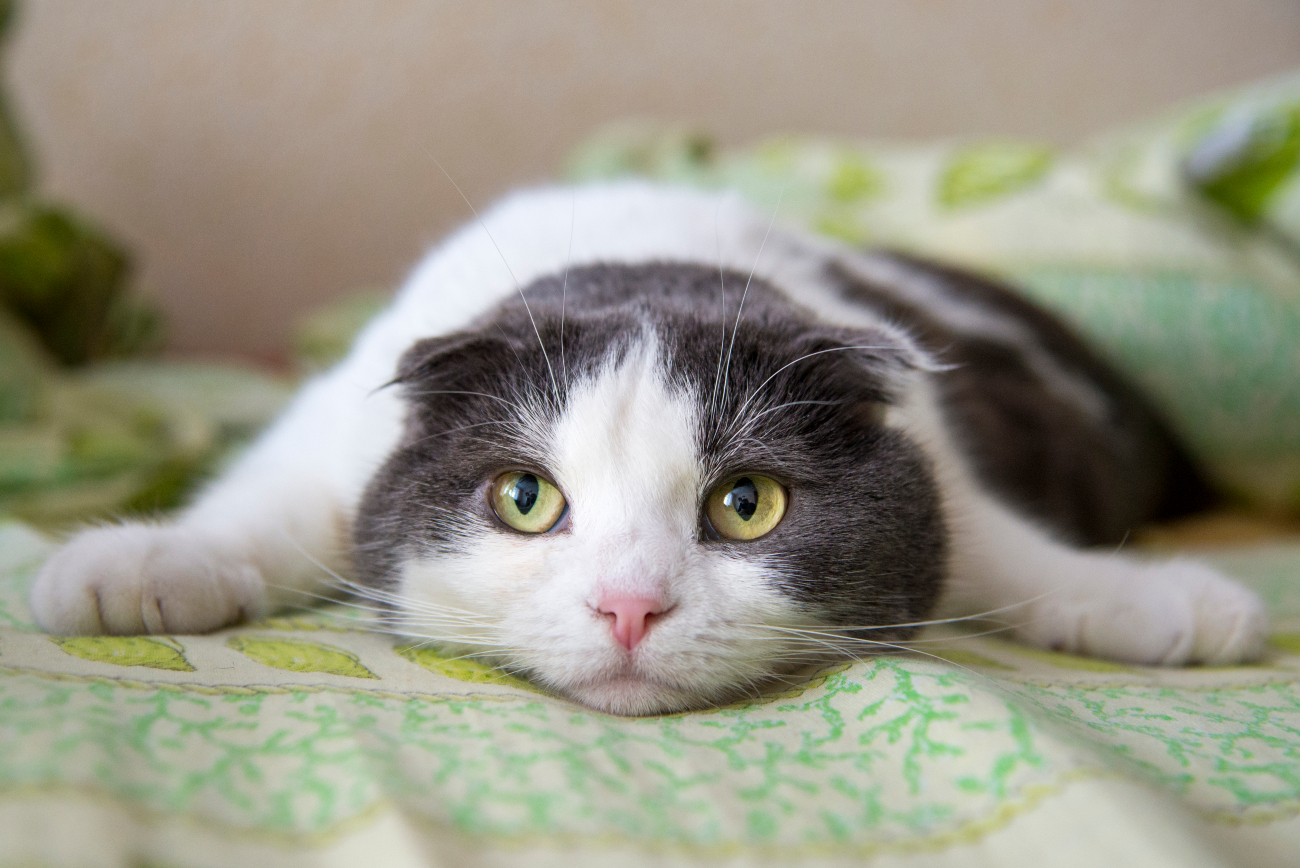What is my cat thinking?
10th May, 2024

Curiosity piqued? Ever wonder what's going on in your feline friend's head? 'What is my cat thinking' dives into decoding the enigmatic world of your cat's thoughts.
From interpreting their body language to understanding their vocalisations, this guide will help you unravel the mysteries behind your cat's behaviours.
So, next time you catch your feline friends staring out the window or kneading your lap, you'll have a better grasp on what's really going on inside that whiskered noggin.
Let's embark on this journey together to uncover the secrets of your beloved pet's mind.
Key takeaways
- Cats communicate through subtle body language cues and vocalisations, providing insights into their thoughts and feelings.
- Social hierarchy and dynamics play a crucial role in a cat's behaviour, with dominance and deferential behaviours contributing to a harmonious environment.
- Playtime is essential for exercise, mental stimulation, and bonding, strengthening the relationship between cats and humans.
- Monitoring changes in sleep and grooming patterns can help detect underlying health issues, with regular grooming promoting overall well-being and relaxation for cats.
Decoding cat body language
To understand your cat better, pay attention to the subtle movements and positions they display through their body language. Cats communicate a lot through their bodies.
For example, when your cat arches its back and the fur along its spine stands up, it's feeling threatened or scared. On the other hand, a cat that slowly blinks at you is showing trust and affection.
If your cat's tail is upright and quivering, it indicates that they're excited or happy to see you. However, a tail that's low or tucked between the legs signals fear or submission.
When your cat kneads or rubs you with its paws, it's a sign of contentment and comfort, reminiscent of their kitten days when they massaged their mother to stimulate milk flow. Understanding these body language cues can deepen your bond with your feline friend and help you respond appropriately to their needs and emotions.
Understanding feline communication
Understanding your cat's communication involves observing their behaviours and reactions closely. Cats are known for their subtle ways of expressing themselves. Pay attention to their body language - a raised tail indicates a friendly greeting, while a low tail shows fear or submission.
Purring typically signifies contentment, but it can also indicate pain or stress. Meowing is a cat's way of getting your attention, whether they're hungry, in pain, or just seeking companionship.
Eye contact is another crucial aspect of feline communication. A slow blink from your cat is a sign of trust and affection. Dilated pupils may mean excitement or aggression.
Ears flattened against the cat's head suggest fear or anger, while forward-facing ears indicate curiosity or happiness. Understanding these visual cues can help you better respond to your cat's needs and emotions.
Exploring cat social hierarchy
When observing your cats, you may notice certain dominant behaviours that establish a social hierarchy within the feline group. Understanding how cats interact socially can give you insight into their relationships and dynamics.
From subtle body language cues to more overt displays of dominance, cats communicate and navigate their social structure in fascinating ways.
Cat dominance behaviour
If your cat displays dominance behaviour, understanding their social hierarchy is crucial for interpreting their actions. Cats establish a hierarchy within their group to determine resources and territory. Here are some common dominance behaviours you may observe in your feline friend:
| Dominance | Behaviour description |
| Head butting | Asserting dominance by marking with scent |
| Blocking | Preventing another cat from passing |
| Staring intensely | Eye contact to show dominance |
| Body blocking | Physically blocking access to resources |
Establishing feline hierarchy
To grasp your cat's behaviour fully, observe closely as they establish their feline hierarchy within your household. Cats are territorial animals, and within a multi-cat environment, they'll naturally establish a social structure. This hierarchy helps to reduce conflicts by defining each cat's role and boundaries.
You may notice dominant behaviours such as one cat consistently eating first or claiming the best sleeping spots. Submissive cats may display deferential behaviours like grooming higher-ranking cats. Understanding this hierarchy can help you manage their interactions and create a harmonious environment.
From establishing hierarchy to daily interactions, each cat's role contributes to the overall dynamics of your feline family. Next, let's delve into social interactions among cats to deepen your understanding further.
Social interactions among cats
As you observe your cats interacting with each other, you can see how they establish a social hierarchy within your household. Cats are known for their complex social structures, which involve various behaviours like grooming, play, and aggression. Through these interactions, cats determine their rank within the group.
Dominant cats will often assert themselves by being more vocal, taking the best sleeping spots, or controlling access to resources like food and toys. Submissive cats, on the other hand, may display deferential behaviours like avoiding eye contact or grooming the dominant cat.
Understanding these social dynamics can help you create a harmonious environment for your feline companions by ensuring each cat's needs are met and conflicts are minimised.
Unravelling cat playtime behaviour
When you observe your cat engaging in playtime activities, you might wonder about the underlying motivations driving their behaviour. Cats exhibit various behaviours during playtime, each serving a specific purpose in their feline world.
Here are three key motivations behind your cat's playtime behaviour:
- Exercise: Playtime allows your cat to stay physically active and maintain their agility and muscle tone. Chasing toys, pouncing, and running around mimic natural hunting behaviours, keeping your cat healthy and fit.
- Mental stimulation: Engaging in play helps stimulate your cat's mind, preventing boredom and providing enrichment. Toys that encourage problem-solving or mimic prey can keep your cat mentally sharp and prevent behavioural issues.
- Bonding: Playtime is a crucial way for your cat to bond with you and other pets in the household. Through interactive play sessions, your cat builds trust, establishes social hierarchies, and strengthens relationships, fostering a deeper connection with their human companions.
Delving into cat sleep patterns
When observing your cat's sleep patterns, it's important to notice how they transition between different stages of rest. Cats typically spend around 12-16 hours a day sleeping, with older cats or kittens needing even more sleep. They go through two main sleep stages: light sleep and deep sleep.
During light sleep, your cat may twitch, move their whiskers, or even make small noises. This stage is crucial for them to stay alert to any potential dangers. On the other hand, deep sleep is when your cat's mood is fully relaxed, and their body is at rest. You might notice them curled up in a cosy ball during this phase.
Understanding your cat's sleep patterns can give you insight into their overall health and well-being. If you notice any sudden changes in their sleeping habits, it could be a sign of underlying issues that need to be addressed.
Next, let's delve into how interpreting your cat's vocalisations can provide further clues about their thoughts and feelings.
Interpreting cat vocalisations
To understand your cat better, pay attention to their vocalisations as they reveal valuable insights into their thoughts and emotions. Cats communicate through a variety of sounds, each carrying a different message.
Here's how you can interpret your cat's vocalisations:
- Meows: Cats use meows to communicate with humans, not with other cats. Different types of meows can indicate various needs or emotions, such as hunger, attention-seeking, or discomfort. Pay attention to the pitch, volume, and duration of the meow to understand what your cat is trying to convey.
- Purring: While purring is often associated with contentment, cats may also purr when they're anxious or in pain. Context is crucial in understanding the reason behind your cat's purring. If accompanied by other signs like a tense body posture, it could signal distress.
- Hissing or growling: These vocalisations are defensive and indicate that your cat feels threatened or scared. It's essential to give your cat space and time to calm down in such situations to prevent aggression.
Demystifying cat grooming habits
Ever wondered why your own cat thinks everyone spends so much time grooming themselves?
From self-care to social grooming behaviours, your feline's grooming habits can reveal a lot about their well-being and relationships.
Keep an eye out for any changes in grooming patterns, as they could indicate underlying psychological stress or health issues.
Grooming as self-care
Your cat's grooming habits are essential for their self-care routine, providing numerous benefits beyond just maintaining their fur.
- Regulates body temperature: Grooming helps your cat stay cool in hot weather by removing excess fur and warm in cold weather by fluffing up their coat.
- Stimulates blood circulation: Licking their fur stimulates blood flow and distributes natural oils for healthy skin.
- Reduces stress: Grooming is a calming activity that helps your cat relax and release pent-up tension.
Understanding these aspects of grooming can help you appreciate how crucial it is for your cat's overall well-being.
Transitioning into the next section, let's explore how social grooming behaviour plays a role in your cat's daily life.
Social grooming behaviour
Continuing from the benefits of grooming for your cat's well-being, understanding how social grooming behaviour influences their daily routine sheds light on their social interactions and bond maintenance.
Cats engage in social grooming not only for cleanliness but also to strengthen social bonds within their group. By grooming each other, cats communicate trust, affection, and a sense of community. This behaviour is particularly common among cats that live together, as it helps to establish a harmonious cohabitation.
Observing your cat engage in social grooming with another feline or even with you can provide insights into their social dynamics and relationships. Understanding these grooming habits can deepen your bond with your cat and help you interpret their social interactions more accurately.
Transitioning into stress-related grooming changes, let's explore how grooming behaviours can indicate your cat's emotional state.
Stress-related grooming changes
Transitioning from the benefits of grooming for your cat's well-being, you can observe how stress-related grooming changes may indicate your cat's emotional state.
Here are three key signs of stress-related grooming changes to look out for:
- Over-grooming: If your cat excessively licks or bites their fur, causing bald patches, it might signal heightened stress levels.
- Under-grooming: On the contrary, a stressed cat may neglect grooming altogether, leading to a dishevelled appearance and matting of the fur.
- Targeted grooming: Focusing on specific areas excessively, like the tail base or belly, could suggest stress triggers in those particular regions.
Understanding these grooming behaviours can provide valuable insights into your cat's emotional well-being.
Conclusion

As you observe your cat's behaviours, facial expressions and interactions, you may start to unravel the mysterious world of their thoughts and feelings. From the flick of a tail to the soft purr in your ear, each gesture and sound holds a clue to their inner world.
Just like deciphering a secret code, decoding your cat's language can open up a whole new realm of understanding and connection between you and your feline friend.
To get a cat insurance quote for your furry friend you can get a quote through our website. If you would like to talk to one of our cat insurance team, you can get in touch with us on 0330 102 5748.
Frequently asked questions
Why does my cat always knock things off the counter?
When your cat knocks things off the counter, it may be seeking attention, playing, or trying to create space. Cats are curious creatures by nature, and this behaviour could be their way of exploring their surroundings.
How can I tell if my cat is stressed or anxious?
To recognise stress or anxiety in your cat, observe for changes in behaviour like excessive grooming or hiding. Offer comfort and create a safe environment. Remember, cats have a way of expressing themselves that can be as clear as a sunny day.
Is it normal for my cat to groom itself excessively?
Yes, it's normal for your cat to groom itself excessively. Cats are meticulous groomers and this behaviour helps regulate body temperature and maintain cleanliness. However, if grooming becomes obsessive or causes hair loss, consult a vet.
Why does my cat always bring me dead animals as gifts?
Your cat brings you dead animals as gifts because it's a natural feline behaviour. Cats understand and view you as part of their family and are trying to provide for you like they would for their own.
What are some common reasons why my cat might be meowing excessively?
If your cat is meowing excessively, it might be seeking attention, food, or expressing discomfort. For example, your feline friend could be lonely and craving interaction. Understanding your cat's needs can help address the meowing.
Helpful Pages
Recent Posts
Pet Insurance Quote
- 98% claims paid *
- Claims paid directly to vets
- 24/7 vet video consultations
- Interest free monthly payments




